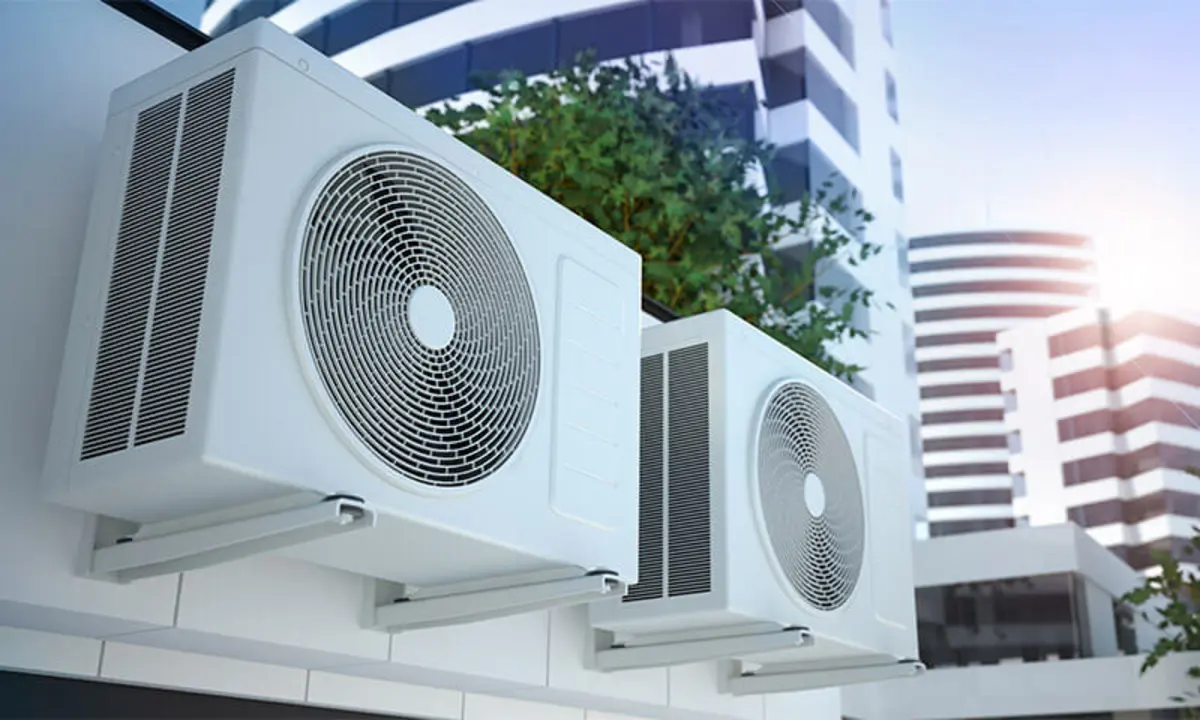
Effective Air Conditioning Management for Commercial Properties – Air conditioning (AC) systems are vital for maintaining a comfortable indoor environment in commercial properties. From offices to retail spaces, temperature control is crucial not only for employee productivity but also for creating a pleasant experience for customers and visitors. However, managing air conditioning effectively in commercial buildings requires careful planning and regular maintenance. In this article, acjakarta explore key strategies for effective air conditioning management that can lead to energy savings, improved comfort, and a longer system lifespan.
Why Air Conditioning Management Is Crucial for Commercial Properties
For businesses operating in commercial properties, maintaining a properly functioning air conditioning system is essential for several reasons:
Comfort and Productivity: A comfortable environment is key to maintaining employee focus and productivity. Too hot or too cold an environment can affect work performance and mood.
Energy Efficiency: Air conditioning accounts for a significant portion of energy costs in commercial properties. Effective management can drastically reduce these expenses.
Customer Experience: In retail and hospitality industries, temperature control is a critical factor in creating a welcoming atmosphere for customers.
System Longevity: Proper maintenance and management practices extend the lifespan of the AC system, reducing the need for costly repairs or replacements.
In essence, efficient air conditioning management not only ensures comfort but also saves money and prolongs the lifespan of the equipment.
1. Regular Maintenance and Inspections
One of the cornerstones of effective air conditioning management is regular maintenance. A well-maintained system runs more efficiently, consumes less energy, and lasts longer. Key maintenance tasks include:
A. Filter Replacement and Cleaning
Filters are crucial in maintaining indoor air quality and ensuring the efficient operation of the system. Clogged filters can restrict airflow, forcing the system to work harder and consume more energy. For commercial properties, where AC systems are used extensively, it’s important to replace or clean the filters every 1–3 months, depending on usage.
B. Coil Cleaning
As time passes, dirt and debris build up on the evaporator and condenser coils, diminishing the unit’s performance. Contaminated coils may cause the system to overheat and possibly break down. Regular cleaning by a professional ensures the coils are operating at maximum efficiency.
C. Refrigerant Levels Check
The refrigerant is essential for the cooling process. If the refrigerant levels are too low, the system cannot cool effectively. Technicians should regularly check the refrigerant levels and replenish them as needed to maintain optimal performance.
D. Ductwork Inspection
Ducts are another important part of the HVAC system. Leaky or clogged ducts can cause temperature imbalances and increase energy consumption. Regular inspection and cleaning of the ducts help avoid these issues and improve airflow throughout the building.
2. Implementing Zoned Cooling
For large commercial properties, a zoned air conditioning system offers a more efficient solution than cooling the entire building uniformly. Zoned cooling systems allow temperature control in different areas of the building, based on the specific needs of each zone.
A. Benefits of Zoned Cooling
Energy Savings: By cooling only occupied areas, businesses can save energy and reduce cooling costs.
Customized Comfort: Different departments or rooms in a commercial property may have varying temperature requirements. Zoned cooling systems provide flexibility and enhance comfort.
System Efficiency: By avoiding unnecessary cooling in unused spaces, you reduce strain on the system, leading to lower wear and tear and a longer system lifespan.
B. Types of Zoned Systems
Thermostatic Zones: Multiple thermostats control separate zones in the building, allowing for independent temperature settings.
Variable Refrigerant Flow (VRF) Systems: These systems allow for precise temperature control in different zones while using the same refrigerant circuit.
3. Smart Thermostats and Automation
Incorporating smart thermostats and automation into your air conditioning management strategy can provide substantial benefits. Smart thermostats allow for more granular control over the building’s cooling system, enabling energy savings and enhanced comfort.
A. Benefits of Smart Thermostats
Energy Efficiency: Smart thermostats adjust temperatures based on occupancy patterns, reducing energy use during non-peak hours. Certain systems are capable of recognizing your habits and automatically fine-tuning settings to maximize energy efficiency.
Remote Control: Facility managers can control the system remotely, adjusting temperatures based on real-time needs, even from a mobile device.
Integration with Building Management Systems (BMS): Smart thermostats can integrate with broader BMS, allowing for seamless control over all environmental systems, including lighting, heating, and security.
B. Scheduling
Scheduling allows you to program the cooling system to turn on and off at specific times. This reduces energy waste by ensuring the air conditioning is running only when necessary, such as before employees arrive or during peak business hours.
4. Energy-Efficient AC Systems
As energy efficiency becomes an increasing priority, upgrading to energy-efficient air conditioning systems is an investment worth considering for many commercial properties. These systems are designed to use less energy while delivering the same or better performance compared to older models.
A. SEER Rating
The SEER (Seasonal Energy Efficiency Ratio) indicates how efficiently an air conditioner operates. A higher SEER value reflects greater energy efficiency. When replacing an old system, choose a model with a high SEER rating to maximize energy savings.
B. Variable-Speed Air Handlers
Variable-speed air handlers adjust airflow according to cooling demand, making them more energy-efficient than traditional systems that operate at a constant speed. These systems not only reduce energy consumption but also provide more consistent cooling.
5. Proper Insulation and Sealing
Effective insulation and sealing are often overlooked in air conditioning management, but they play a significant role in maintaining a comfortable temperature and improving system efficiency.
A. Insulation
Proper insulation in walls, ceilings, and ducts prevents cool air from escaping and warm air from entering, reducing the workload on the AC system. Well-insulated buildings can maintain a consistent temperature with less energy use.
B. Sealing Gaps and Leaks
Leaky windows, doors, or ducts can lead to significant energy loss, causing the air conditioning system to work harder. Sealing these gaps ensures that cool air stays inside, reducing the overall cooling demand.
6. Monitoring and Performance Analytics
To ensure that your air conditioning system is performing optimally, it’s essential to continuously monitor its efficiency. Many modern air conditioning systems are equipped with sensors and performance analytics tools that provide real-time data on energy consumption, temperature trends, and system performance.
A. Benefits of Monitoring Systems
Early Detection of Issues: Monitoring systems can alert facility managers about irregularities, such as temperature fluctuations or unusual energy usage, enabling prompt maintenance or repairs.
Data-Driven Decisions: Analytics provide valuable insights into system performance, helping businesses optimize energy consumption and reduce operational costs.
Conclusion
Service ac jakarta: Effective air conditioning management is crucial for the comfort and productivity of occupants in commercial properties. By focusing on regular maintenance, implementing zoned cooling, utilizing smart thermostats, and investing in energy-efficient systems, businesses can significantly improve their HVAC performance while reducing costs. With the right approach, air conditioning management not only ensures a comfortable indoor environment but also leads to long-term savings and increased system longevity.









